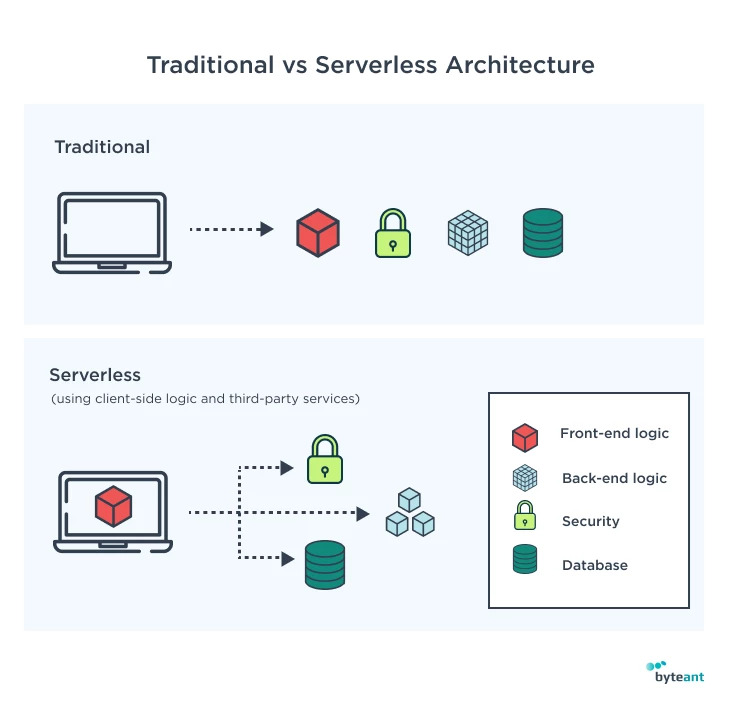Explore how serverless computing works and set a clear difference between using microservices and serverless architecture.
Serverless computing, which is commonly referred to as just Serverless, is a promising cloud-based technology model that has emerged on the app development and software architecture horizon in recent years. Trying to avail themselves of the huge serverless framework potential, many big-time market players have been quick to jump on the cloud services bandwagon. Such software giants like Google, Microsoft, IBM, and Amazon already offer the customers to migrate all the local business operational efficiencies to be hosted on their flagship serverless platforms like AWS Lambda and Azure Functions.
Simply put, serverless architecture is an event- and request-driven tech solution allowing application developers to create actionable working environments in the cloud that have all the necessary computational resources needed for a smooth coding flow. This framework comes in handy especially when time is an issue and the tasks assigned are quite resource-intensive.
Moreover, while opting for serverless services to streamline your application development processes, you can drastically improve your other business optimization initiatives along the way – like DevOps and Agile practices.

#microservices #serverless #microservice architecture #computing
